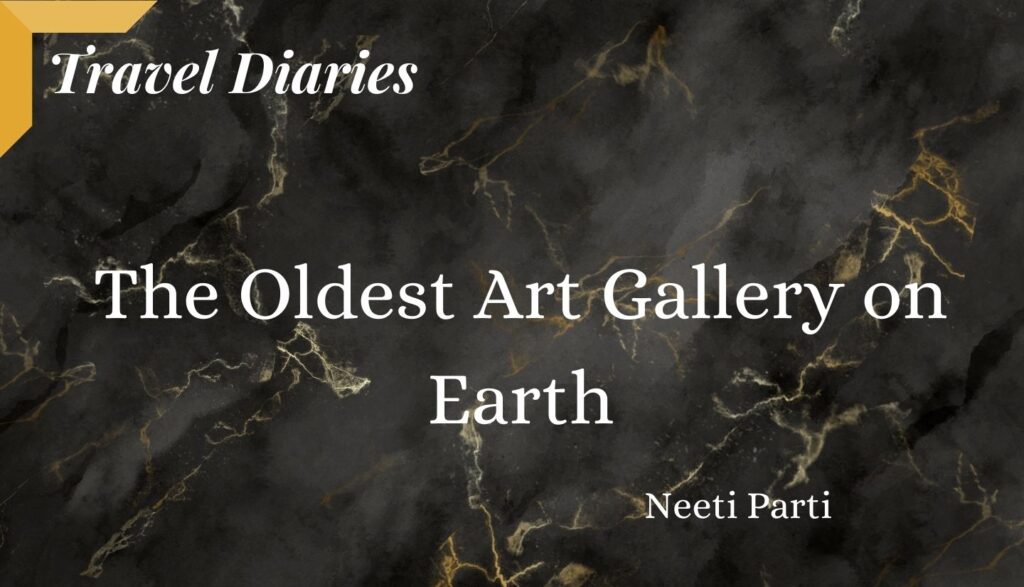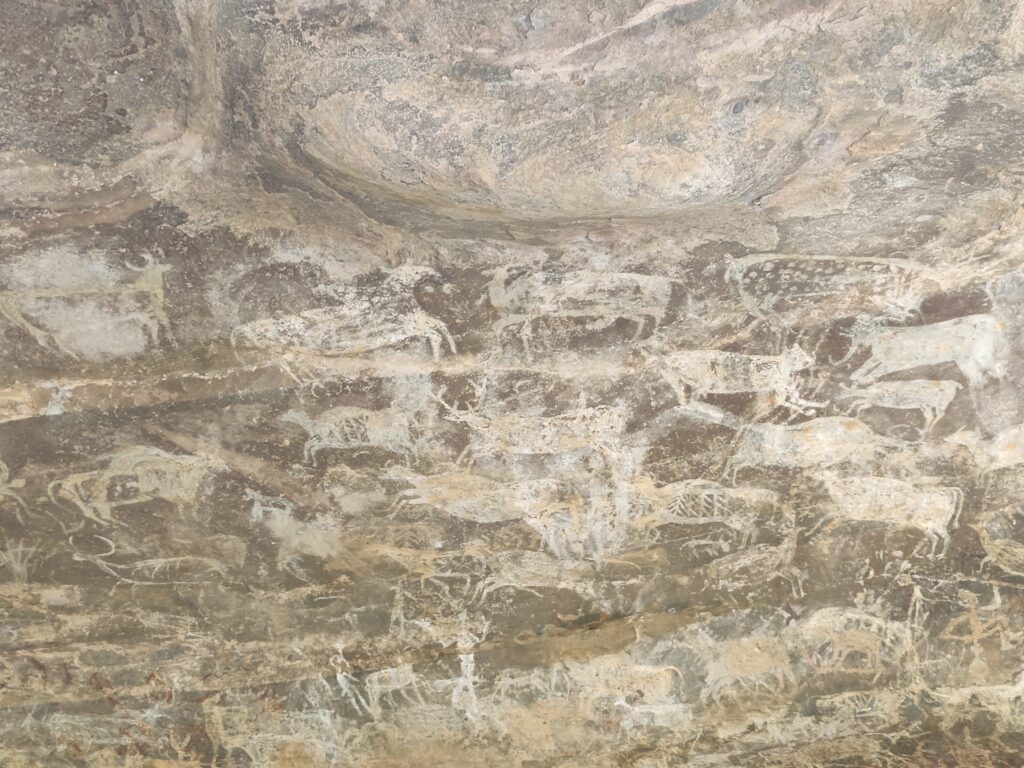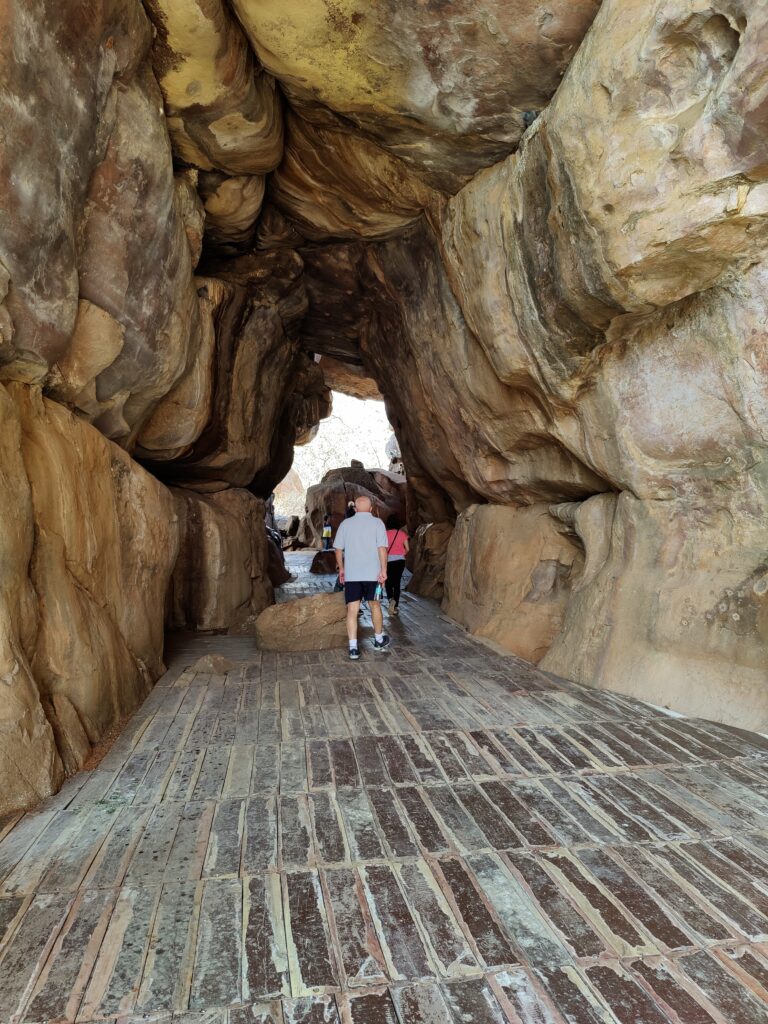
“The most beautiful experience we can have is the mysterious. It is the fundamental emotion that stands at the cradle of true art and true science.” – Albert Einstein, The World As I See It
Bhimbetka Rock Shelters located in Raisen District of Madhya Pradesh, some forty-five kms from Bhopal, in the foothills of Vindhya Mountains, harbour the oldest art gallery in this world.
Legend has it that ‘Bhimbetka’ is derived from ‘Bhimbethka’ literally referring to the sitting place of ‘Bhim’ from Mahabharata. Supporting this legend are the names of the surrounding villages – Pandapur, Bhiyapura (erstwhile Bhimpura). It is also believed that the Lakhjuhar forest was once the wax (lac) palace of the Pandavas.
One is filled with total wonder not only at the fineness of the drawings and paintings, but also by the fact that they provide a window into the various stages of human development.
To stand amid the dappled sunshine, listening to the sweet sound of birds as gentle wind flows through the tall trees, gives the spectator goose bumps at just imagining that approximately thirty thousand years ago, artists among our ancestors stood there creating masterpieces with the paint and brush fashioned by nature whilst peer groups grunted in appreciation or perhaps even clapped!
The paintings depict scenes from the lives of hunters and gatherers of the Upper Paleolithic and Mesolithic periods when most animals were yet to be domesticated and humans were nomadic. The rocks were painted across successive time periods, and have allowed archaeologists to assess their historical timeline.

The earliest paintings depict wild animals like the gaur, cheetal, stags, wild boars and elephants. There are also scenes of hunting of wild animals with bows and arrows. Depictions are geometric, abstract simple lines, partially filled in or silhouetted figures. Later works of art depict processions, rituals and scenes of war. Some paintings depict Ganesha, Shiva and Mother Goddesses. Radiocarbon Dating technique has been used to date them.
Scholars believe that fingers may have been used along with brushes, most likely made from twigs chewed to soften them, with bird feathers and animal hair. Colours may have been obtained from rocks and vegetables. Hydrated iron oxides from rocks seem to have provided shades of ochre and red. Bird droppings and sap may have been used for whites.

Though the entire area of Bhimbetka is amazing, two areas need special mention. One is the cathedral-like huge Auditorium Cave, the biggest rock shelter surrounded by quartzite towers. The second is the rock shelter called the ‘Zoo Rock Shelter’, which depicts 453252 animals from sixteen different species including elephants, deers, snakes and peacocks.
The Rock Shelters sit inside the Ratapani wildlife sanctuary, Madhya Pradesh. Their area is covered by these caves spanning seven hills, namely Bhimbetka, Vinayaka, Bhonrawali, Lakha Juar East, Lakha Juar West, Jhondra, and Muni Babaki Pahari.
Interestingly, the Bhimbetka Caves were accidentally discovered by Dr. Vishnu Wakankar, an archaeologist. In 1957, he spotted these rock structures through his train window while travelling to Nagpur. His keen eyes noticed the similarities of these structures with those he had studied in Spain and France. He then gathered a team to investigate his discovery and the world came to know about the incredible Bhimbetka Caves.
Apart from being an Art Gallery, the Rock Shelters are an archaeological treasure. The Shelters were declared a UNESCO World Heritage Site in 2003 and should be a part of every wanderer’s bucket list.
Neeti Parti
